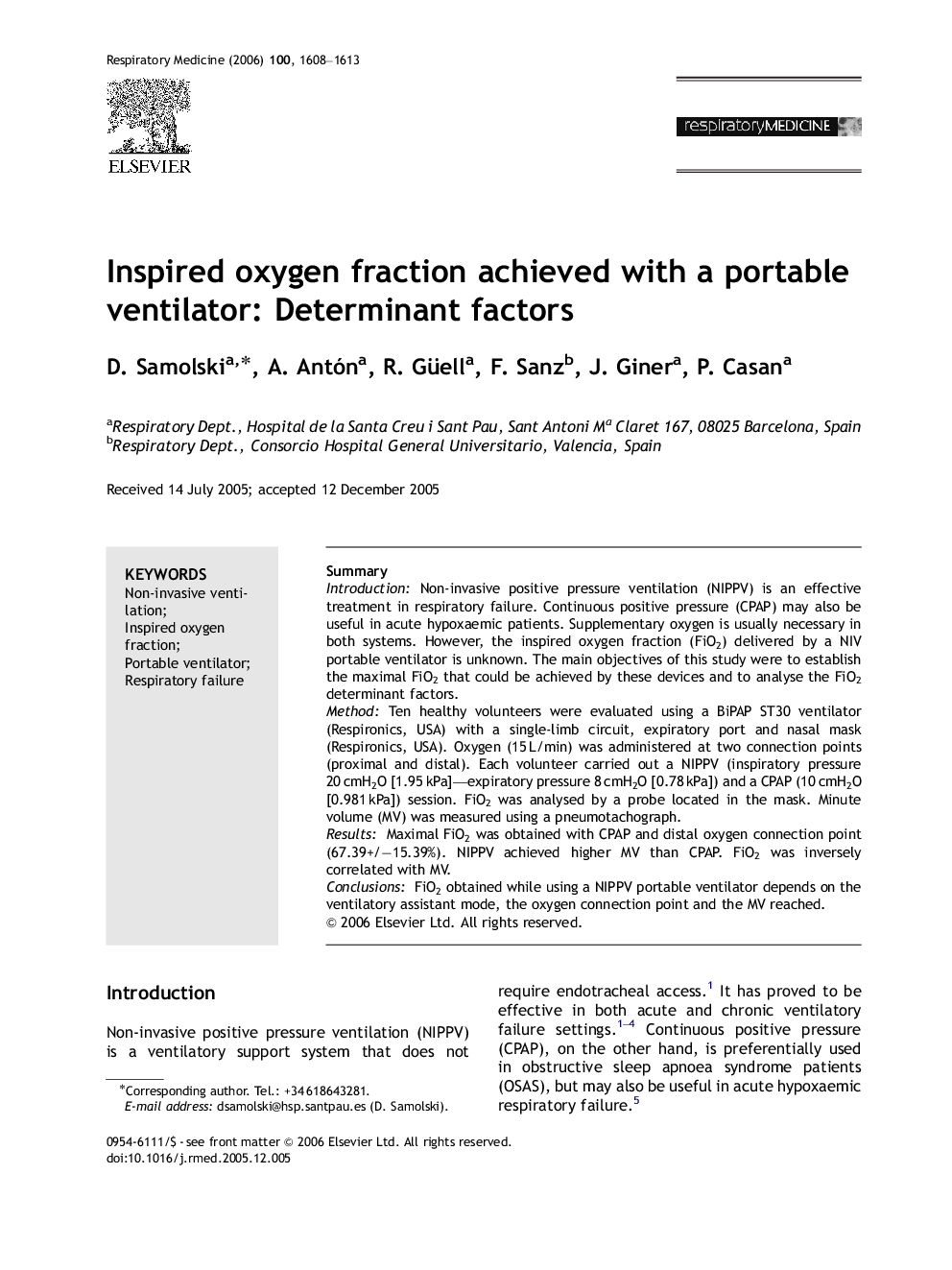| Article ID | Journal | Published Year | Pages | File Type |
|---|---|---|---|---|
| 4212241 | Respiratory Medicine | 2006 | 6 Pages |
SummaryIntroductionNon-invasive positive pressure ventilation (NIPPV) is an effective treatment in respiratory failure. Continuous positive pressure (CPAP) may also be useful in acute hypoxaemic patients. Supplementary oxygen is usually necessary in both systems. However, the inspired oxygen fraction (FiO2) delivered by a NIV portable ventilator is unknown. The main objectives of this study were to establish the maximal FiO2 that could be achieved by these devices and to analyse the FiO2 determinant factors.MethodTen healthy volunteers were evaluated using a BiPAP ST30 ventilator (Respironics, USA) with a single-limb circuit, expiratory port and nasal mask (Respironics, USA). Oxygen (15 L/min) was administered at two connection points (proximal and distal). Each volunteer carried out a NIPPV (inspiratory pressure 20 cmH2O [1.95 kPa]—expiratory pressure 8 cmH2O [0.78 kPa]) and a CPAP (10 cmH2O [0.981 kPa]) session. FiO2 was analysed by a probe located in the mask. Minute volume (MV) was measured using a pneumotachograph.ResultsMaximal FiO2 was obtained with CPAP and distal oxygen connection point (67.39+/−15.39%). NIPPV achieved higher MV than CPAP. FiO2 was inversely correlated with MV.ConclusionsFiO2 obtained while using a NIPPV portable ventilator depends on the ventilatory assistant mode, the oxygen connection point and the MV reached.
